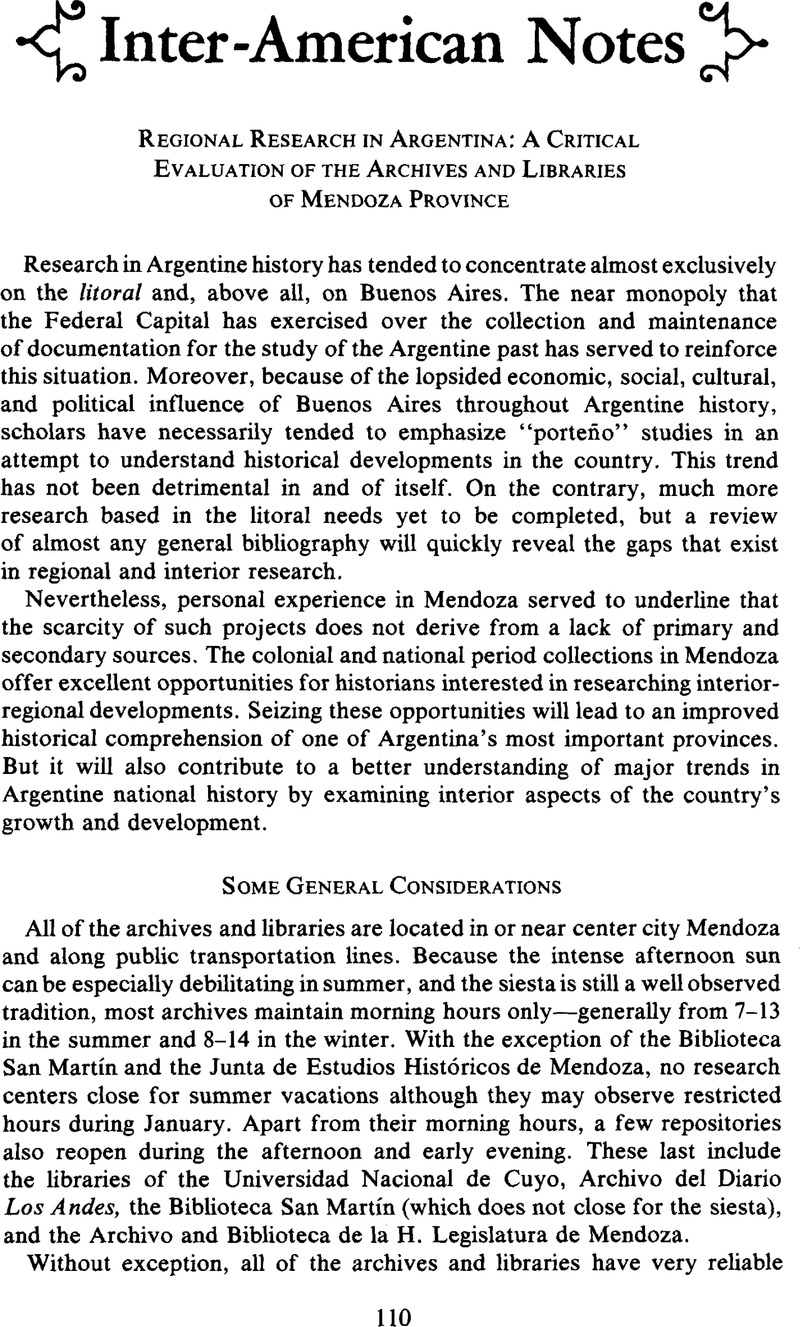No CrossRef data available.
Published online by Cambridge University Press: 11 December 2015

1 One such study which exemplifies the value of AHM's colonial documentation, and which presents an excellent analysis of Mendoza's economic development before independence, is Martínez C, Pedro Santos, Historia económica de Mendoza durante el Virreinato, 1776–1810. Madrid: Gráficas ORBE, S.L., 1961.Google Scholar
2 For examples of specific types of colonial documentation available at AHM, see the Indice Documental in Martínez C, Pedro Santos, op. cit., pp. 401–450.Google Scholar
3 Two important studies of Mendoza's irrigation network are: Cano, Guillermo J., Régimen jurídico económico de las aguas en Mendoza (1810–1884). Mendoza: Librería de la Universidad, 1941;Google Scholar and Martínez C, Pedro Santos, “La irrigación de Mendoza durante el Virreinato (1776–1810),” Revista de la Junta de Estudios Históricos de Mendoza. Segunda época. Año I, No. 1 (1961) 41–68.Google Scholar For a compilation of irrigation laws since 1884 see: de Mendoza, Provincia, Digesto del Departamento General de Irrigación. Mendoza: Casa J. Peuser, 1929.Google Scholar
4 Two notable exceptions are Campoy's, Luis articles: “Conductas diferentes de grupos culturales ante la posesión de la tierra,” Investigaciones en Sociología. Año I, No. 1 (enero-junio, 1962) 49–83,Google Scholar and “Persistencia de algunos valores sociales en una sociedad en desarrollo,” Investigaciones en Sociología. Año IV, No. 9 (enero-junio, 1965) 53–84.
5 In 1861 a violent earthquake with its epicenter under the city itself completely destroyed the capital.
6 Luis Campoy based his two studies on the padrones de riego. Jorge Balan of the Di Telia Institute in Buenos Aires is using them in his study of class formations in Mendoza and Tucumán.
7 The origin and significance of several plans of Mendoza City are discussed in Lucero, Juan Draghi, “Integración de la ciudad de Mendoza a través de su evolución histórica (1561–1961),” Actas de la XV Semana de Geografìa. Mendoza: Ministerio de Educación, Universidad Nacional de Cuyo, 1961, pp. 15–36.Google Scholar